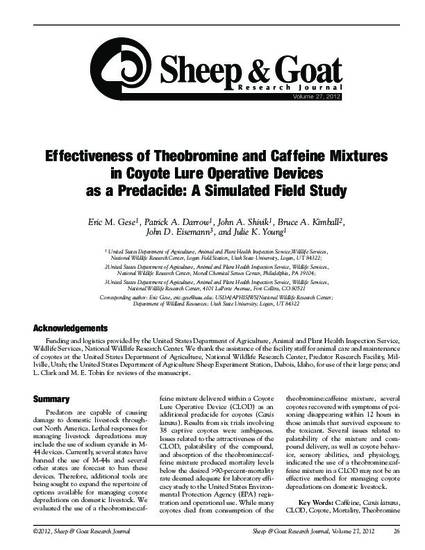
Sheep & Goat Research Journal, Volume 27, 2012. pp. 26-31.
Predators are capable of causing damage to domestic livestock throughout North America. Lethal responses for managing livestock depredations may include the use of sodium cyanide in M- 44 devices. Currently, several states have banned the use of M-44s and several other states are forecast to ban these devices. Therefore, additional tools are being sought to expand the repertoire of options available for managing coyote depredations on domestic livestock. We evaluated the use of a theobromine:caffeine mixture delivered within a Coyote Lure Operative Device (CLOD) as an additional predacide for coyotes (Canis latrans). Results from six trials involving 38 captive coyotes were ambiguous. Issues related to the attractiveness of the CLOD, palatability of the compound, and absorption of the theobromine:caffeine mixture produced mortality levels below the desired >90-percent-mortality rate deemed adequate for laboratory efficacy study to the United States Environmental Protection Agency (EPA) registration and operational use. While many coyotes died from consumption of the theobromine:caffeine mixture, several coyotes recovered with symptoms of poisoning disappearing within 12 hours in those animals that survived exposure to the toxicant. Several issues related to palatability of the mixture and compound delivery, as well as coyote behavior, sensory abilities, and physiology, indicated the use of a theobromine:caffeine mixture in a CLOD may not be an effective method for managing coyote depredations on domestic livestock.
Available at: http://works.bepress.com/julie_young1/212/

U.S. government work.